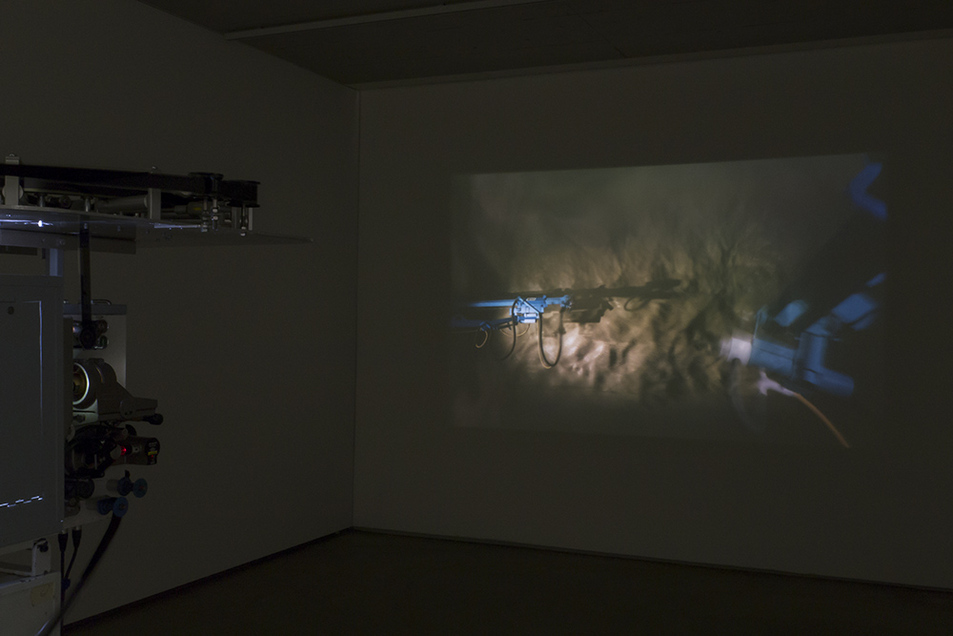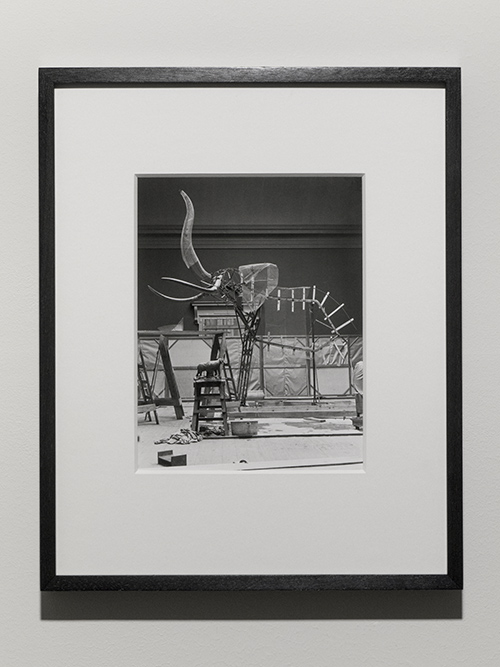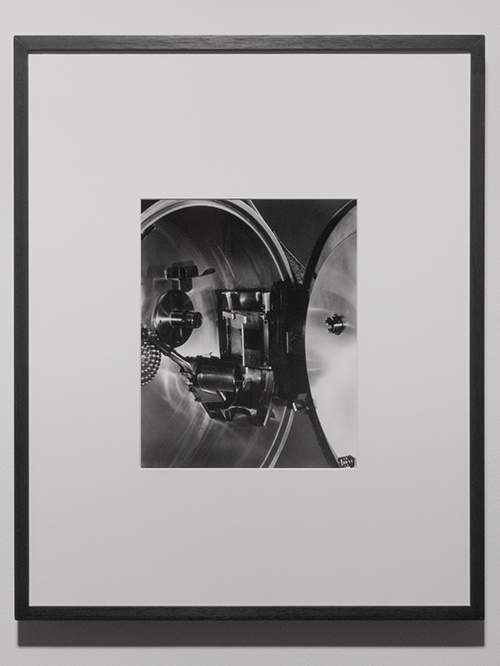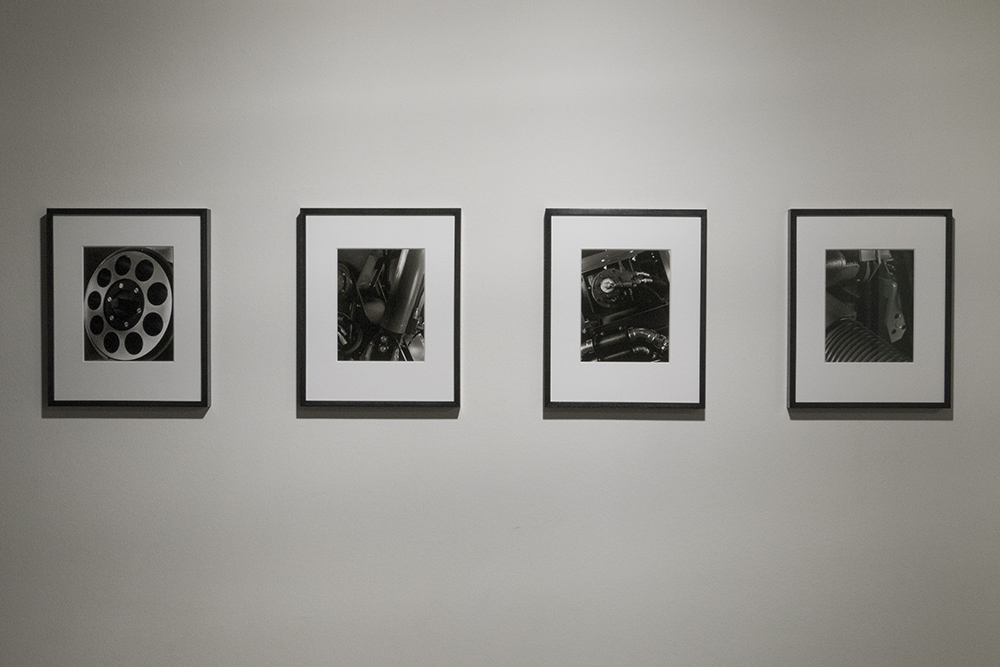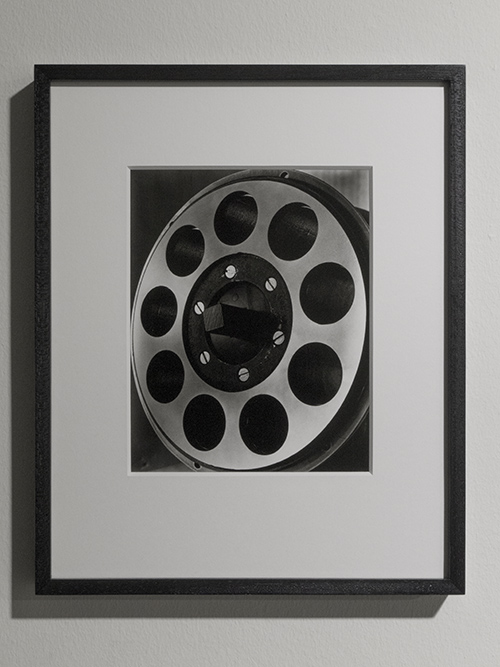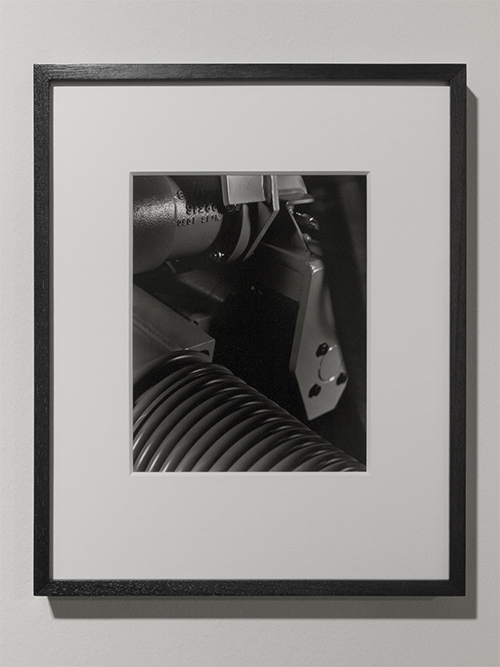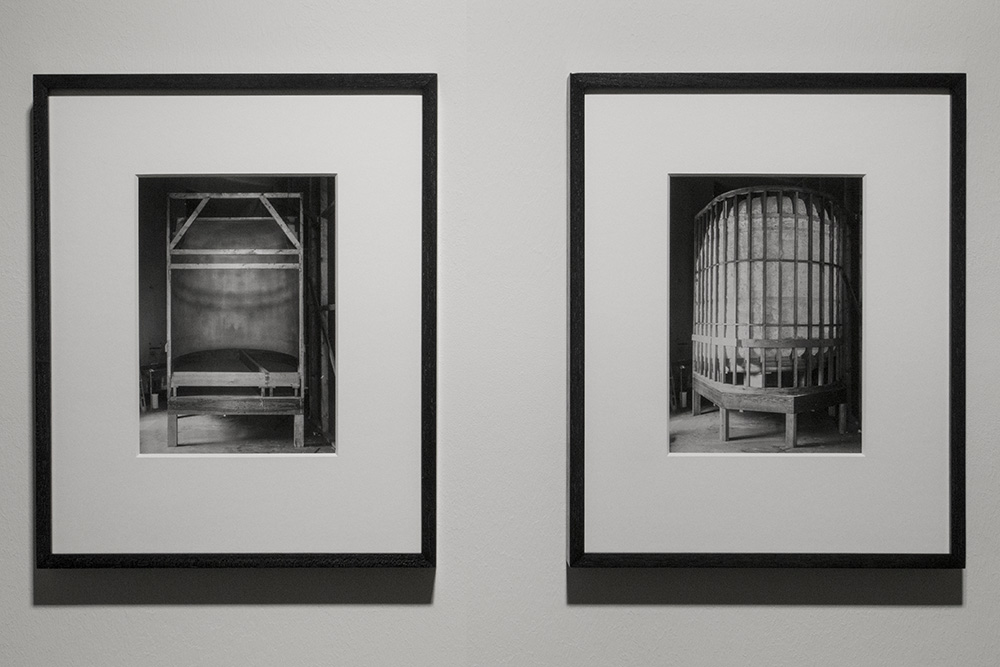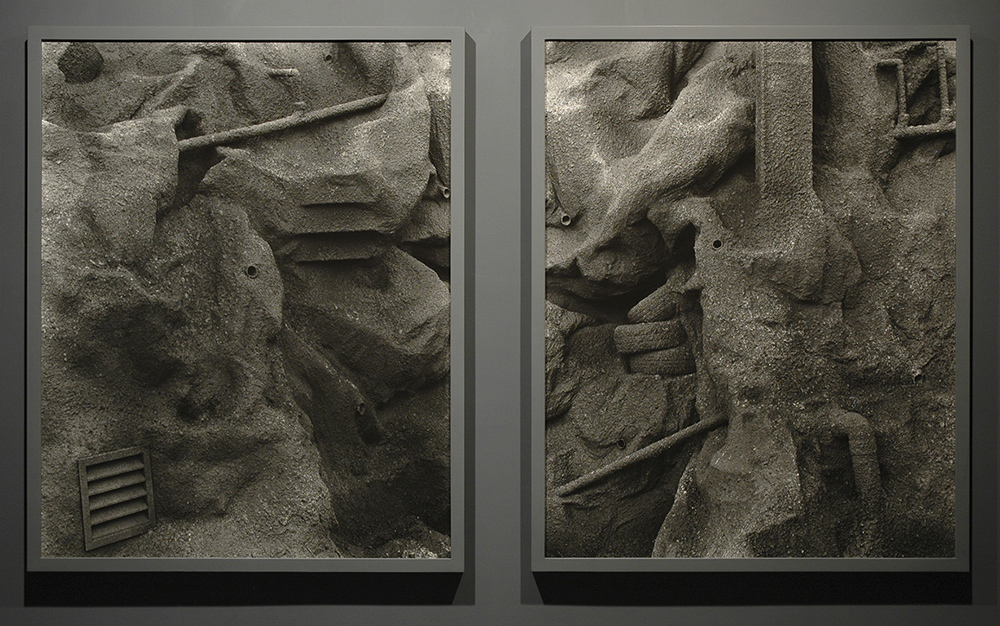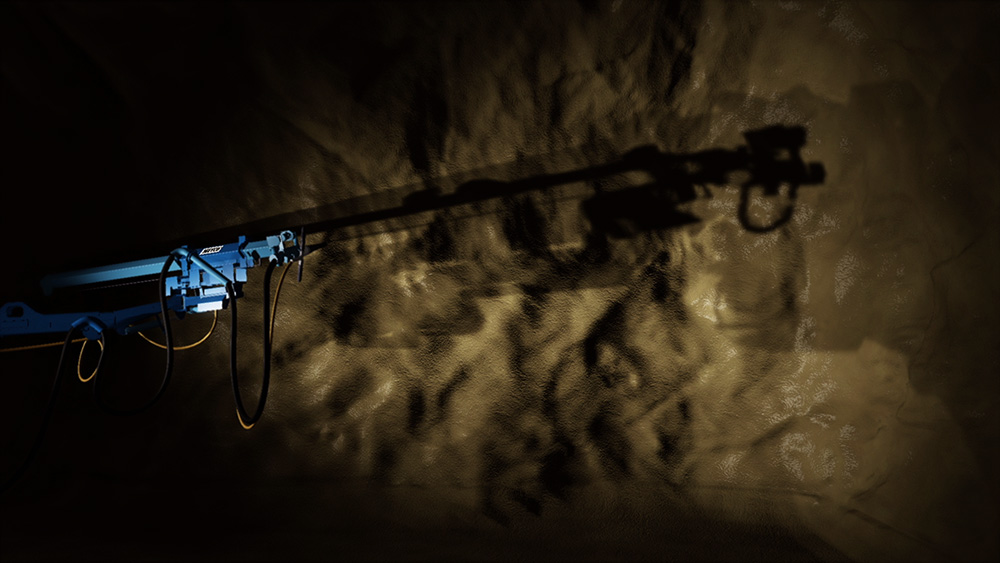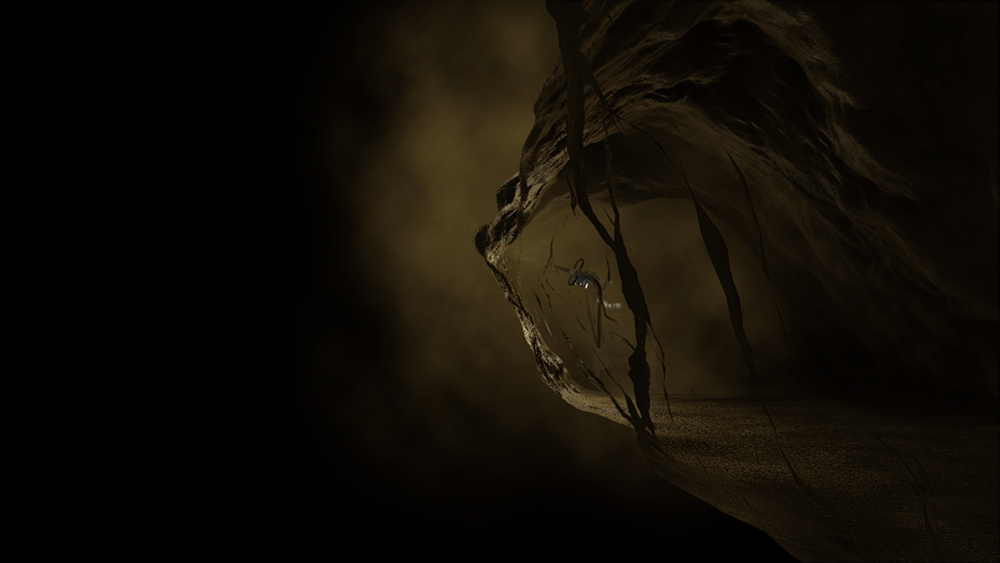Akeley Inside the Elephant
Akeley Inside the Elephant features slow panning views across an undulating interior landscape whose surface is continuously being sprayed with wet concrete by a seemingly autonomous machine. Presented as a looped 35mm film projection, the work delves into the peculiar provenance of sprayed concrete, a material history which leads back to the proto-photography of natural habitat dioramas and specifically the pioneering taxidermist Carl E. Akeley (1864-1926). The foundational myth of sprayed concrete, also known as 'shotcrete', narrates its invention alongside the preparation of a pair of African elephants by Akeley while working at the Chicago Field Museum in 1907. Further compounding this 'taxidermic image' (to paraphrase André Bazin), Akeley later put his hand to re-inventing the 35mm motion picture camera: frustrated by the inadequacies of the bulky film equipment of his day for capturing wildlife in the field, Akeley worked on a prototype during his time at the American Museum of Natural History, New York, and eventually patented a working model in 1917. The 'Akeley Camera' embodied a milestone in the history of cinematography, with a series of novel features enabling the capture of fast moving subjects, and was quickly adopted by cameramen for field work, including notably by Robert Flaherty for Nanook of the North (1922). Paul Strand was another owner of this camera: having acquired an 'Akeley' in 1922 for his films, he soon turned it into its own subject in a series of reflexive photographs. In the spirit of Strand's photographs, the series Machinima 1-4 consists of large format black and white contact prints depicting details of contemporary robotic shotcrete applicators. Together with the large scale photographic diptych Topographic Obscenities, these works seek to enter a particular historical juncture between film and concrete, considering an afterlife for indexicality by speculating on shotcrete as a photographic emulsion.
The development and production of Akeley Inside the Elephant and Machinima 1-4 was supported by Akademie Schloss Solitude, Stuttgart, Kunst Raum Riehen, Basel, Camberwell College of Arts, London, Atlas Copco - Meyco AG, Winterthur, and Edvirt AB, Gothenburg. All images on this page: installation views, Perpetually Transient, with Florian Graf, Basim Magdy and Anahita Razmi at Kunst Raum Riehen, Basel, 29 March – 4 May 2014, curated by Heidi Brunnschweiler. Further exhibitions: Unlike Scenes, with Cara Benedetto, Katarina Burin and Thiago Granato at Akademie Schloss Solitude, Stuttgart, 13 June – 27 July 2014. International Museum Day, Tabakalera Centre for Contemporary Culture, Donostia/San Sebastián, Spain, 20 May 2017. Bernd Behr, Galerie Lisa Kandlhofer, Vienna. 23 March 2018-27 April 2018.
Bernd Behr, 'Akeley Inside the Elephant: Trajectory of a Taxidermic Image', Philosophy of Photography, 7:1+2, 2016, pp.43-61.
Heidi Brunnschweiler, Exhibition Text, Kunst Raum Riehen (Deutsch)
Annette Hoffmann, Modellcharakter, artline magazin, 29/04/14. (Deutsch)
The development and production of Akeley Inside the Elephant and Machinima 1-4 was supported by Akademie Schloss Solitude, Stuttgart, Kunst Raum Riehen, Basel, Camberwell College of Arts, London, Atlas Copco - Meyco AG, Winterthur, and Edvirt AB, Gothenburg. All images on this page: installation views, Perpetually Transient, with Florian Graf, Basim Magdy and Anahita Razmi at Kunst Raum Riehen, Basel, 29 March – 4 May 2014, curated by Heidi Brunnschweiler. Further exhibitions: Unlike Scenes, with Cara Benedetto, Katarina Burin and Thiago Granato at Akademie Schloss Solitude, Stuttgart, 13 June – 27 July 2014. International Museum Day, Tabakalera Centre for Contemporary Culture, Donostia/San Sebastián, Spain, 20 May 2017. Bernd Behr, Galerie Lisa Kandlhofer, Vienna. 23 March 2018-27 April 2018.
Bernd Behr, 'Akeley Inside the Elephant: Trajectory of a Taxidermic Image', Philosophy of Photography, 7:1+2, 2016, pp.43-61.
Heidi Brunnschweiler, Exhibition Text, Kunst Raum Riehen (Deutsch)
Annette Hoffmann, Modellcharakter, artline magazin, 29/04/14. (Deutsch)
